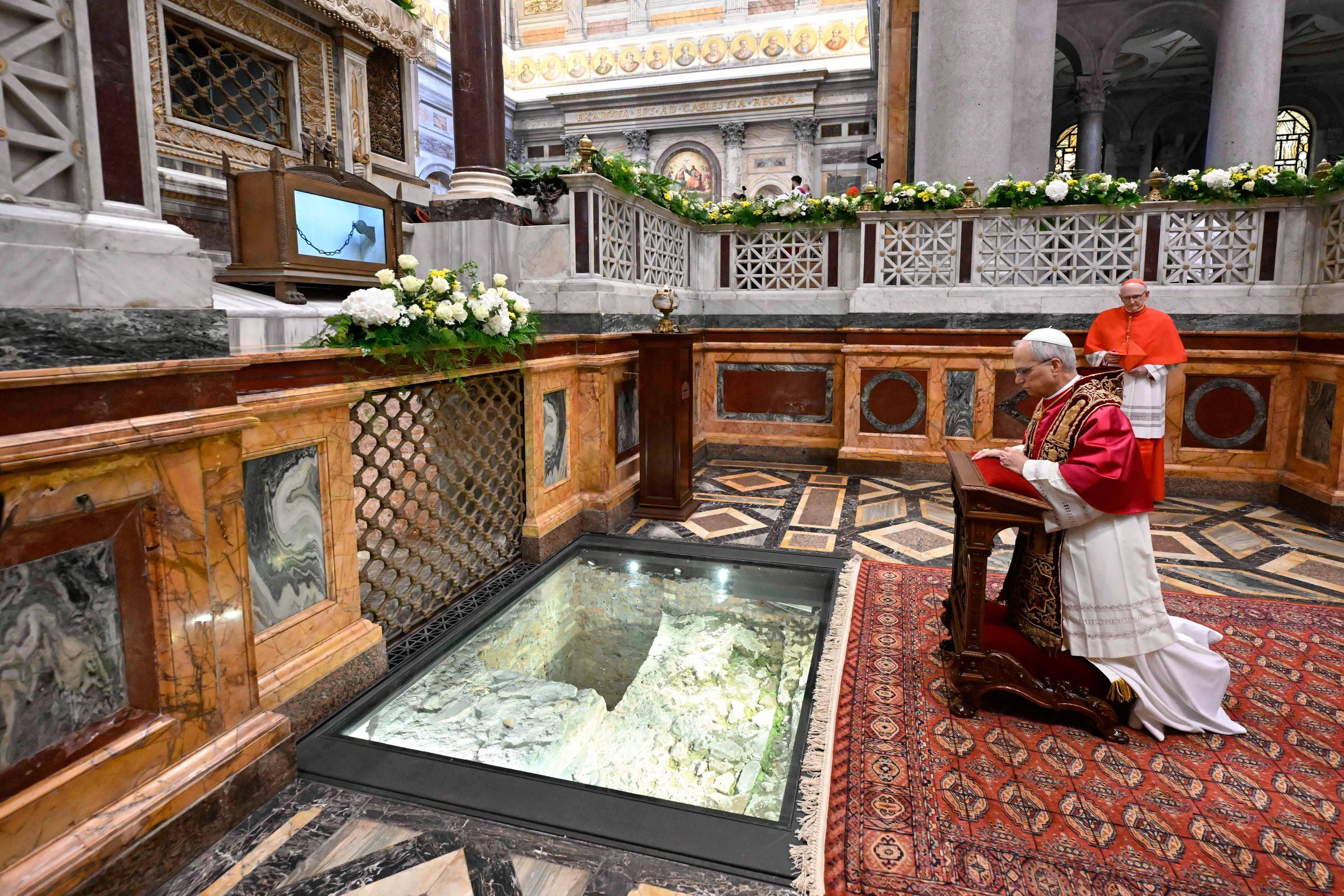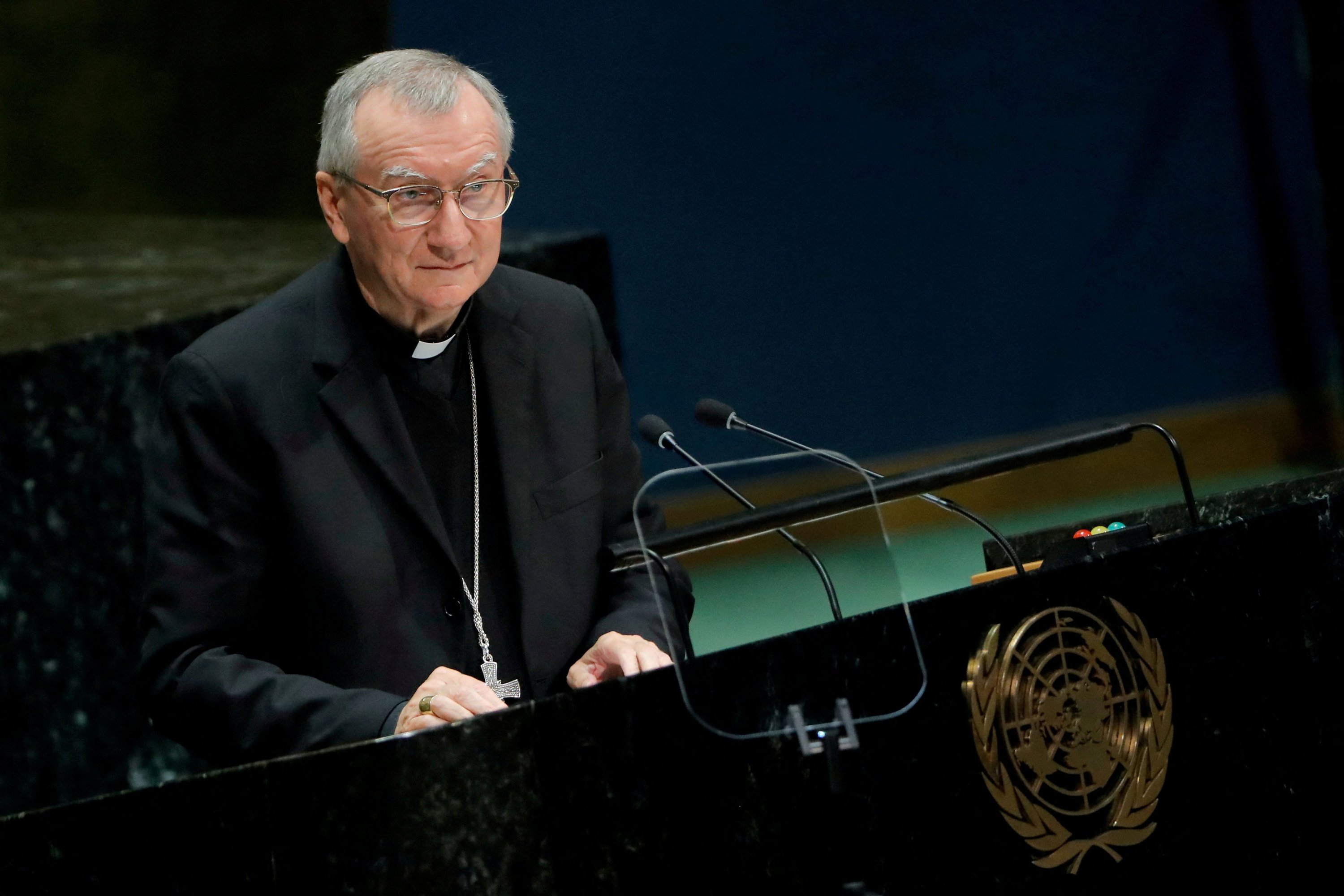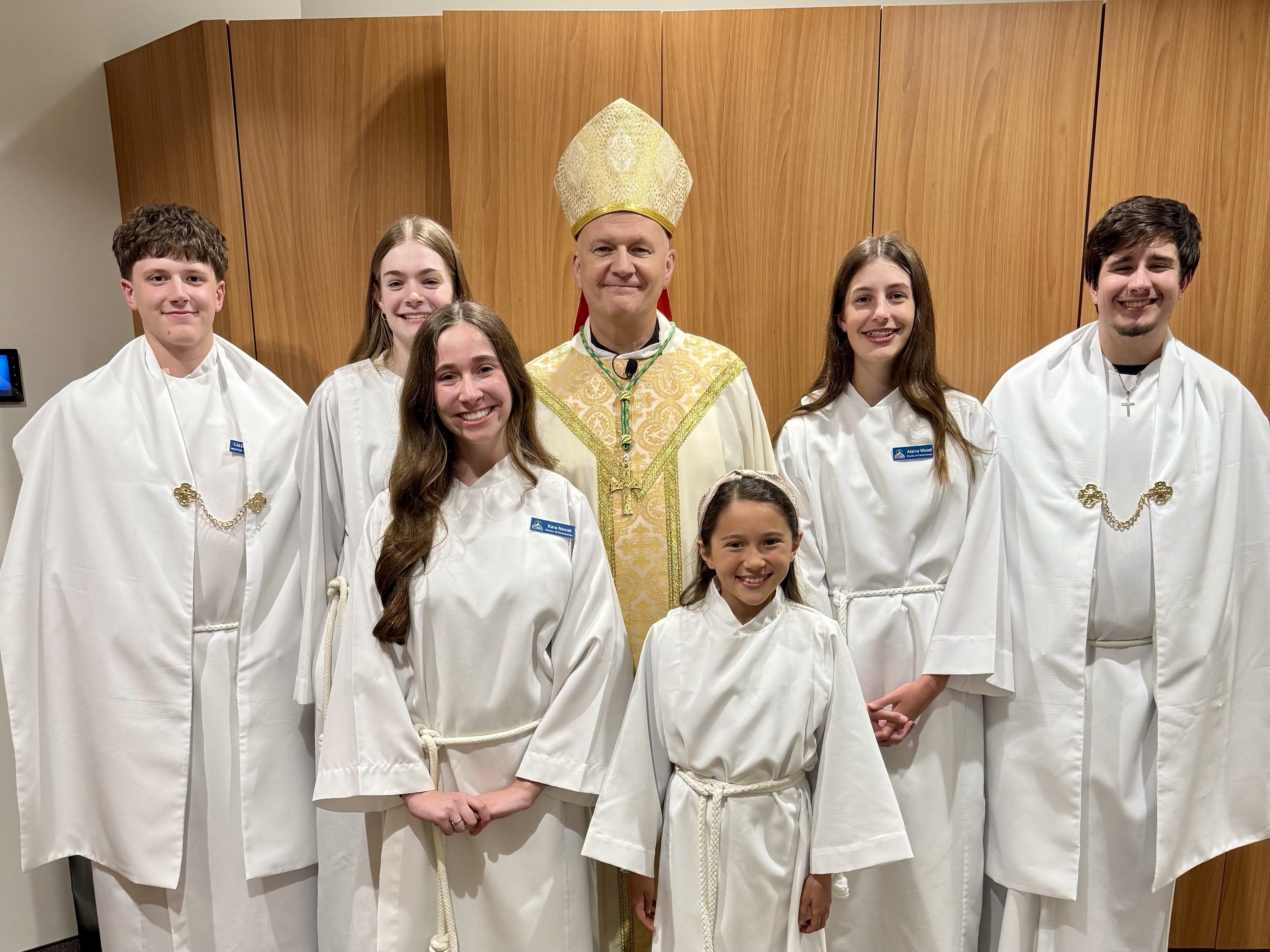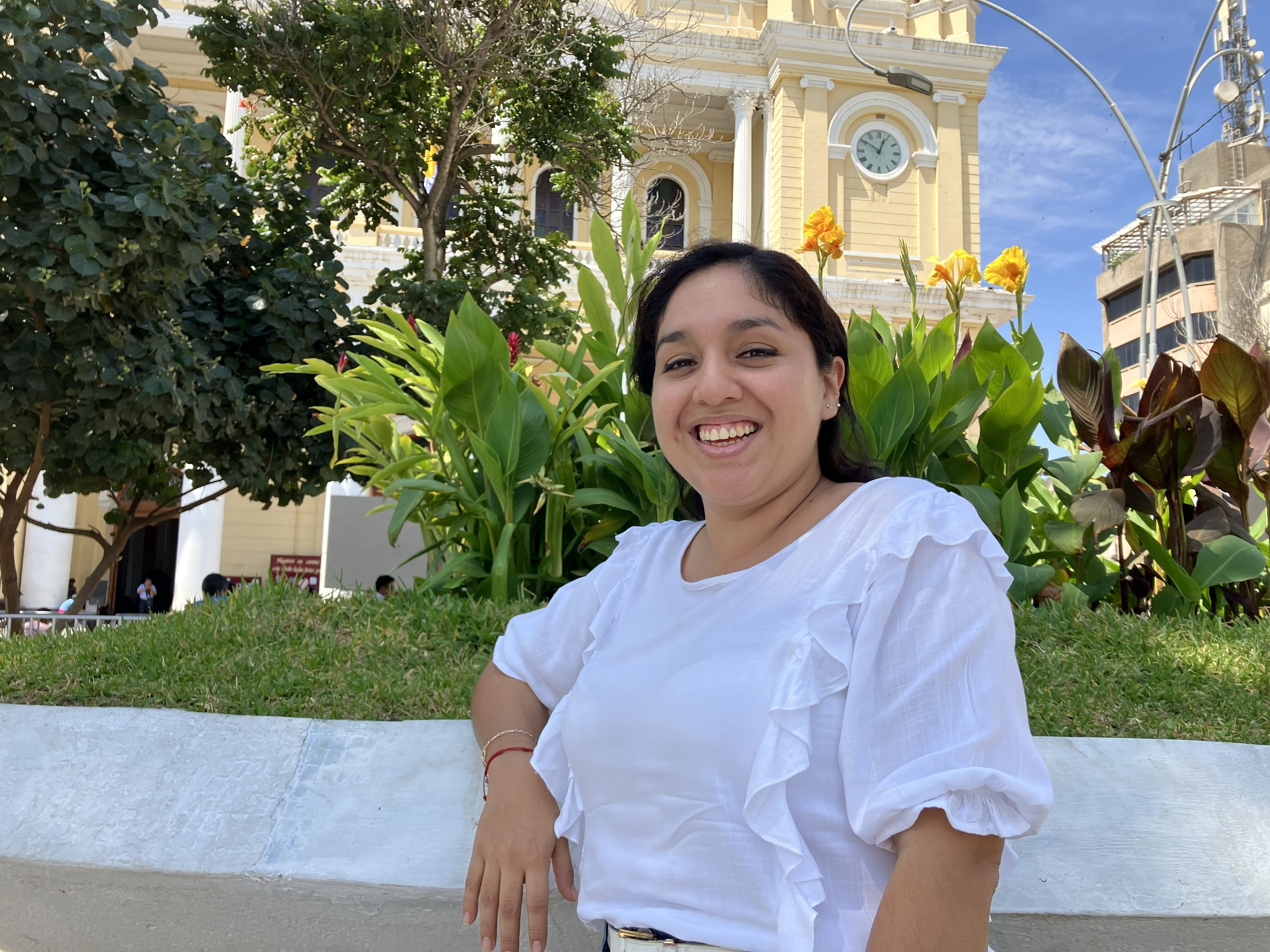Posted on 05/20/2025 17:48 PM (Detroit Catholic)

Posted on 05/20/2025 17:00 PM (Detroit Catholic)

Posted on 05/20/2025 16:58 PM (Detroit Catholic)

Archbishop Weisenburger pauses for a photo with Mass servers at St. Kieran Parish in Shelby Township, where the archbishop celebrated Mass and greeted parishioners Monday, May 19. The Mass is part of the archbishop's tour of welcome Masses as he gets to know the parishes, communities and people of the Archdiocese of Detroit.
Posted on 05/20/2025 16:56 PM (Detroit Catholic)

Posted on 05/20/2025 16:41 PM (Detroit Catholic)

Posted on 05/20/2025 16:32 PM (CNA Daily News)
 Missouri State Capitol in Jefferson City Missouri. / Credit: eurobanks/Shutterstock
Missouri State Capitol in Jefferson City Missouri. / Credit: eurobanks/Shutterstock
St. Louis, Mo., May 20, 2025 / 12:32 pm (CNA).
Republican lawmakers in Missouri approved a new referendum last week that, if passed by voters, could reinstate many of the state’s pro-life laws, largely undoing a previous statewide referendum that expanded abortion rights a few months ago.
The ballot measure, HJR73, would ask voters if they want to allow abortion only in the case of a medical emergency, fetal abnormality, or rape or incest. It also would ban public funding for any abortions not done because of medical emergency or rape or incest.
In addition, the referendum would allow the state General Assembly to enact laws that regulate the provision of abortions, abortion facilities, and abortion providers to ensure the health and safety of pregnant mothers.
The measure would also constitutionally ban hormones, puberty blockers, and surgeries for “gender transition” for minors. Missouri already bans those procedures for minors, but that restriction, first passed in 2023, is set to expire in August 2027.
The measure is expected to appear before voters in November 2026, or sooner if Republican Gov. Mike Kehoe, who is Catholic, calls a special election.
Missourians had last November narrowly voted to overturn the state’s near-ban on abortion and enshrine a provision guaranteeing “reproductive freedom” in the state constitution, coming into effect Dec. 6, 2024.
Missouri law had previously extended protection to unborn babies throughout all of pregnancy with the only exception being cases of “medical emergency.”
Although the 2024 amendment language mentions that laws could be passed to restrict abortion past the point of “fetal viability,” the amendment simultaneously prohibits any interference with an abortion that a doctor determines is necessary to “protect the life or physical or mental health” of the mother.
Missouri lawmakers had in recent years passed numerous laws designed to protect patients and limit the abortion industry’s influence, including 2017 regulations requiring that abortion doctors have surgical and admitting privileges to nearby hospitals; that abortion clinics must be licensed with the state; and that clinics must meet hospital-like standards for outpatient surgery.
Soon after the 2024 amendment took effect, Planned Parenthood filed a lawsuit challenging numerous pro-life protections in Missouri, including the state’s 72-hour waiting period for abortions; the state’s ban on abortions done specifically for reasons of the race, sex, or a Down syndrome diagnosis of the baby; the state’s ban on “telemedicine” abortions; and the state’s requirement that only licensed physicians may perform abortions.
The Missouri Catholic Conference (MCC), which advocates policy in the state on behalf of the state’s bishops, described the upcoming referendum as an “opportunity to add health and safety protections for mothers and their preborn children back into the state constitution.”
The MCC had previously expressed support for HJR73, urging support for “the effort to reduce abortions in the state of Missouri and to create a culture of life and compassion and limit the effects of Amendment 3.”
Missouri was one of the first states to fully ban abortion after the fall of Roe v. Wade in 2022. Following the 2024 vote, Missouri and six other states expanded legal protection for abortion, while voters in Florida, Nebraska, and South Dakota voted down major pro-abortion proposals the same night.
Posted on 05/20/2025 15:20 PM (CNA Daily News)
 Cardinal William Goh speaks to EWTN News Vice President Matthew Bunson in Rome on Monday, May 19, 2025. / Credit: EWTN News
Cardinal William Goh speaks to EWTN News Vice President Matthew Bunson in Rome on Monday, May 19, 2025. / Credit: EWTN News
Vatican City, May 20, 2025 / 11:20 am (CNA).
Singapore’s Cardinal William Goh believes Pope Leo XIV will build a greater unity within the Church, particularly for Catholic faithful often divided on matters of Church doctrine and morality.
Calling the new pontiff a “gift of God” in an interview with EWTN News Vice President Matthew Bunson, Goh said the Holy Father is the “right person” to lead the Church toward synodality and explain the balance between “orthodoxy and being progressive.”
“Being traditional is not wrong [and] going back to the orthodoxy of the Church is not wrong,” he said. “But, at the same time, we are not just asking our Church to be too legalistic about our moral doctrines in terms of practice.”
Describing the new pontiff as an active listener who is “very attentive to the concerns and sharings of the cardinals,” Goh said the Holy Father’s desire for unity is evident in both his words and actions since his May 8 election.
“I believe that, so far, based on his speeches, he is putting into practice the call to synodality,” he said. “In his meeting with the cardinals, he spoke to us in a very personal way.”
“I believe that there will be greater collaboration and greater dialogue so that we can truly bring about a greater unity in the Church,” he added.
Reflecting on issues that were “dividing the Church” during Pope Francis’ pontificate such as “ambiguity” in some teachings outlined in Amoris Laetitia and the synodal process, the Asian cardinal said he hopes Pope Leo XIV will bring clarity, and less confusion, to discussions on Catholic teaching.
“I keep on emphasizing that we cannot talk about synodality without unity in doctrines, without unity in faith,” he told Bunson.
“Unity that is built on superficial love can never be real unity,” he continued. “Unity must be founded on truth that is expressed in charity.”
With the continual growth of the Church in both Asia and Africa, Goh said many Catholic faithful are converts who do not want to compromise their newfound religion.
“We are people who have strong faith in the Lord and we want to walk in the way of the Gospel,” Singapore’s first and so far only cardinal said in the interview. “In fact, we gave up the old faith in order to exchange it for the true faith.”
“We want to walk the way of the truth and follow the Gospel and what the Church taught us,” he stressed. “That is what is guiding us and our people in Asia.”
In addition to the Holy Father’s ability to be a good listener, Goh noted the pope’s ability to speak several languages has been an advantage for those wanting to discuss with him the pastoral challenges the Church faces in different parts of the world before and after the recent conclave.
“The good thing about Pope Leo is that he speaks English because very often many of the Asian cardinals don’t speak Italian so well,” he said. “So we want to communicate and to share our views with the Holy Father but it’s a bit difficult because of the language.”
“I think once you know English, Spanish, and Italian, you can cover at least two-thirds of the globe, right?” he said.
Posted on 05/20/2025 14:43 PM (CNA Daily News)
 Italian Cardinal Baldassare Reina was created a cardinal by Pope Francis during the consistory at St. Peter’s Basilica on Dec. 7, 2024. / Credit: Daniel Ibañez/CNA
Italian Cardinal Baldassare Reina was created a cardinal by Pope Francis during the consistory at St. Peter’s Basilica on Dec. 7, 2024. / Credit: Daniel Ibañez/CNA
Vatican City, May 20, 2025 / 10:43 am (CNA).
Pope Leo XIV, in one of his first personnel appointments, on Monday named Cardinal Baldassare Reina grand chancellor of the Pontifical Theological Institute John Paul II for Marriage and the Family, replacing Archbishop Vincenzo Paglia, who turned 80 on April 20.
Reina, 54, is vicar general of the Diocese of Rome since 2024. As part of that role, he is also grand chancellor of the Pontifical Lateran University, the home of the John Paul II Institute.
Pope Leo’s May 19 appointment of Reina as grand chancellor appears to be a return to the former practice of linking the leadership of the institute to the vicar general of Rome. This practice had been changed under Pope Francis, who named Paglia to the role in 2016.
The following year, in 2017, Francis made the controversial decision to re-found the institute, originally established by Pope John Paul II in 1982 under the name the Pontifical John Paul II Institute for Studies on Marriage and Family, broadening its focus from moral theology to the social sciences. When new statutes were issued in 2019, the institute was also criticized for not renewing some of the contracts of longtime faculty and for other hiring decisions.
Paglia, who is president of the Pontifical Academy for Life, told CNA on May 19 it was foreseen he would be replaced as chancellor of the John Paul II institute after turning 80, in accordance with Vatican guidelines. He said he does not know when he may be replaced as head of the Pontifical Academy for Life, but given his age, it is reasonable it may also be soon.
He declined to comment on the institute’s controversies under his leadership.
Posted on 05/20/2025 14:13 PM (CNA Daily News)
 Photograph of Pope Leo XIV released by the Vatican. / Credit: Vatican Media
Photograph of Pope Leo XIV released by the Vatican. / Credit: Vatican Media
CNA Newsroom, May 20, 2025 / 10:13 am (CNA).
Follow our live coverage as Pope Leo XIV, first U.S.-born pope in history, begins his pontificate: Experience history in the making with former Cardinal Robert Prevost.
Posted on 05/20/2025 13:21 PM (CNA Daily News)
 Pope Leo XIV and St. Nicholas of Tolentine. / Credit: Daniel Ibáñez/EWTN News; Province of Our Mother of Good Counsel of the Augustinian Order
Pope Leo XIV and St. Nicholas of Tolentine. / Credit: Daniel Ibáñez/EWTN News; Province of Our Mother of Good Counsel of the Augustinian Order
Lima Newsroom, May 20, 2025 / 09:21 am (CNA).
Perhaps many Catholics wonder who Pope Leo XIV’s favorite saint is. A Peruvian missionary priest who is a close friend and confidant of the pontiff said he knows the answer in this little-known devotion of the Holy Father, who used to pray to this saint on his knees in a small chapel near Chiclayo in northern Peru.
“St. Nicholas of Tolentine is, without a doubt, his favorite saint. He is the protector of his perpetual vows, his great devotion within Augustinian spirituality,” said Peruvian priest Father David Farfán Guerrero, whom the Holy Father met in 1985 in Chulucanas in the Piura district of the country.
Farfán, who has served as pastor of St. Turibius of Mogrovejo Parish for about 10 years, welcomed ACI Prensa, CNA’s Spanish-language news partner, to San Nicolás, a small settlement located outside of Chiclayo, specifically to the humble chapel dedicated to St. Nicholas of Tolentine, considered the first saint of the Order of St. Augustine and who lived in the 13th century.

“This place is very special in the life of His Holiness because this is where, as I often say, ‘he put his knees to the test.’ He had hardly arrived when he would go in and pray to the patron saint of his perpetual profession,” said the priest, a former missionary in Canada and the Philippines.
The then-Friar Robert Prevost — now Pope Leo XIV — professed his solemn (or perpetual) vows with the Augustinians on Aug. 29, 1981, taking this Italian mystic as his patron saint. Years later, his brothers in the order appointed Prevost prior general during the 2001 ordinary general chapter and renewed their trust in him for a second term in 2007.
Adopting a saint when making vows — also called “patron” or “intercessor” — is a common custom in some religious orders. It consists of choosing a saint whose life serves as an example and spiritual aid to better live one’s devotion to God and fulfill one’s commitments.
According to Farfán, the then-Bishop Prevost, who served as bishop of the Diocese of Chiclayo from 2015 to 2023, “never imagined that, in Chiclayo, within the diocese, he would find a chapel and a village dedicated precisely to this saint.”
“When he arrived as bishop, he discovered its existence and then adopted the custom of asking for the key to the chapel, entering alone, and praying there before the image of the saint. Right here,” he recounted with emotion.
The connection with this chapel was further strengthened when Prevost was put in charge of the formation of the Augustinians in Trujillo.
“He used to have the novices make the pilgrimage on foot from the Guadalupe district to here [more than 30 miles], and then continue on to Pomalca and Tumán [about 25 miles], where there was also an Augustinian presence,” the priest said.

The image of St. Nicholas in the village of San Nicolás (a little over 1.25 miles from the town of Zaña) not only bears witness to centuries of faith but also represents a visible symbol of the devotion that has accompanied Pope Leo XIV since his beginnings as a friar.
Discussing the image of St. Nicholas of Tolentine inside the chapel, Farfán explained that it is the oldest in the Zaña area. According to a restorer who worked on it, the priest explained, it is more than 450 years old, which directly links it to the arrival of the Augustinians in this region.
The history of the Augustinian presence in Zaña dates back to the 16th century, when St. Augustine Convent, one of the most important centers of devotion to St. Nicholas of Tolentine in northern Peru, was founded.
“This indicates that the Augustinians who arrived [to establish] St. Augustine Convent in Zaña brought it from Europe; the image already existed there; it was simply transferred. We don’t know who made it or the exact year it arrived, but since we know the date the convent was founded, we assume it came with the first friars who settled there,” he explained.
According to the chronicler Friar Antonio de la Calancha, through the intercession of St. Nicholas of Tolentine, represented by the statue in the chapel, numerous miracles were performed in the town of Zaña, attracting great popular devotion and generous alms for the Augustinian order.
St. Nicholas of Tolentine was a humble Augustinian friar who dedicated his life to comforting the sick, preaching by example, and praying for the souls in purgatory.
The Italian saint is considered the first saint of the Augustinian order. He was born around 1245 in Sant’Angelo in Pontano, Italy, but his name was forever linked to Tolentine, where he lived and served for 30 years. At a young age, he joined the Augustinian community in his town, where he began his journey as a novice and student. He was ordained a priest around 1273 and shortly afterward sent to Tolentine, a city that would become the center of his intense pastoral work.
According to the Order of St. Augustine, Nicholas was not known for his erudition or for writing great works but for something much more important: his closeness to the people, his profound life of prayer, and his total dedication to those most in need.
He traveled through the poor neighborhoods, comforted the sick and dying, heard confessions tirelessly, and always sought to alleviate suffering, both physical and spiritual. He lived austerely, but with a contagious joy. Shortly before his death, when asked why he seemed so happy, he calmly replied: “Because my God and Lord Jesus Christ, accompanied by His Holy Mother and my Holy Father Augustine, is saying to me: Come! Good and faithful servant, enter into the joy of your Lord.”
Throughout his life — and even after his death in 1305 — he was credited with numerous miracles. He is the patron saint of the souls in purgatory and protector against the plague, fires, and stuttering. His canonization was celebrated by Pope Eugene IV in 1446, on the solemnity of Pentecost, and for many, he remains a model of silent devotion, constant prayer, and boundless charity.
Pope Leo XIV’s profound devotion to St. Nicholas of Tolentine not only reveals his Augustinian roots but also the soul of a pastor who, like the 13th-century saint, consoles, prays, and walks humbly alongside his people.
Here is a prayer to St. Nicholas of Tolentine:
O glorious wonderworker and protector of the souls in purgatory, St. Nicholas of Tolentine! With all the affection of my soul, I beseech you to intervene with your powerful intercession on behalf of these blessed souls, obtaining from divine clemency the remission of all their crimes and punishments, so that, upon emerging from that dark prison of suffering, they may go to enjoy the beatific vision of God in heaven. And for me, your devoted servant, obtain, O great saint, the most lively compassion and the most ardent charity toward these beloved souls. Amen.
This story was first published by ACI Prensa, CNA’s Spanish-language news partner. It has been translated and adapted by CNA.